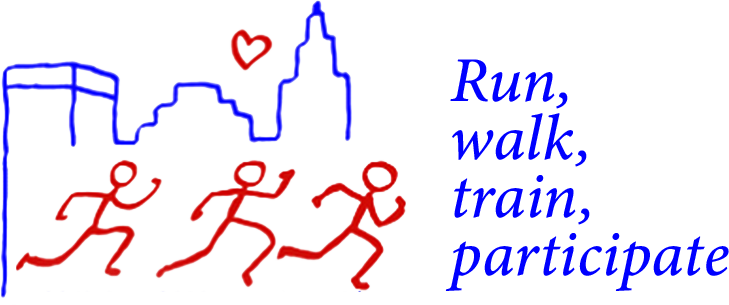Hot weather training tips:
- Rule #1 is to remember that “discretion is the better part of valor.” Common sense—NOT your training schedule, weekly mileage goal, 3,282-day running streak, weight-loss campaign, etc—needs to be your guide.
- Be alert to THI (temperature-humidity index or “feels like” temperature) and air quality for the day. These are both available in daily weather reports. The air quality is particularly important if you have asthma and/or allergies. Carry your inhaler with you on the run-better safe than sorry.
- Run for time, not mileage: in extreme heat and humidity, your body is working much harder than usual. Instead of running for a certain number of miles, set a time goal. If your schedule calls for 5 miles and that normally takes you 50 minutes, simply run for 50 minutes. Don’t worry about the distance covered; your body will still have gotten the same workout it would have running the 5 miles in better weather.
- Run in the early morning or evening, not at midday. The early morning may be more humid, but it is still preferable to the noontime sun and peak temperatures.
- Pick a shady route, if at all possible. Running on tree-lined streets and park roads will feel much cooler than trudging along an industrial road or commercial strip with no shade. Wooded trails, such as those in Roger Williams Park, Goddard Park, and the Blackstone Valley bike path, can feel as much as 10 degrees cooler.
- Wear cool, wicking clothing, and not much of it. Shorts and a sleeveless top are all you need. This is not the time to try to hide the few extra pounds you put on over the winter. If you need exercise clothing made of wicking fabric, but don’t want to spend a fortune, check out Marshall’s, TJMaxx, Ocean State Job Lots (Russell tops for $5-$7), and Sierra Trading Post http://www.sierratradingpost.com
- Start out wet. Pour water over your head and neck before you start. Sweat evaporating from your skin cools your body, but it usually takes at least a little bit of running before you are sweating enough for this to kick in. If you pour water over yourself before you run, the water serves as “artificial sweat” that begins evaporating immediately.
- Look for lawn sprinklers and run through them as you go by. (This is another good reason to run early in the morning, which is when most people have their sprinklers on.)
- Carry water with you or know IN ADVANCE where you can get water on your route. There are a variety of sports water bottles and belts available at sporting goods stores, or you can just carry a couple of small plastic water bottles. If you use disposable bottles, make sure they land in a recycle bin and not on the side of the road or trail.
- “Hydrate”: This is the new-fangled word for drinking lots of water. Work on this all day, not just on the run. Alcohol, coffee, and caffeinated tea do not count, because these all have a diuretic effect and will actually draw water out of your system. Although a little crude, the easiest way to know if you are fully hydrated is by the color of your urine. It should be almost clear; the darker it is, the less water there is in your system.
- Substitute that calorie-laden candy bar or fatty potato chips with fresh fruit and vegetables, which will satisfy your sugar craving and also have a high water content.
Finally, know the warning signs of dehydration and heat prostration. Warning signs, along with links to several articles on warm weather running, can be found at http://running.about.com/od/illnessesandrunning/p/dehydration.htm
